Creating Equitable Community and Place-Based Education and Fighting Systemic Inequities from the Inside
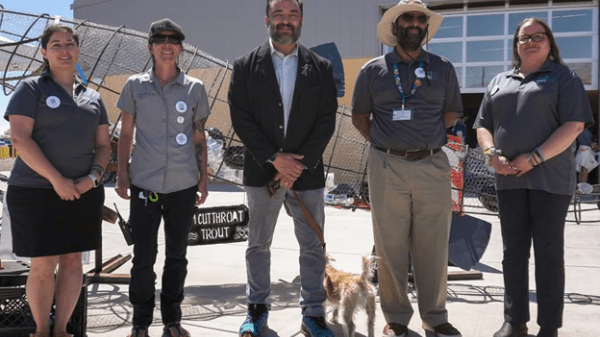
Each month, NAAEE shares narratives from the CEE-Change Fellows as they implement their community action projects and work to strengthen environmental education and civic engagement capabilities, all supporting the mission of cleaner air, land, and water. Join us on their journey! The Civics and Environmental Education (CEE) Change Fellowship is NAAEE’s newest initiative to support leadership and innovation in civics and environmental education in North America. This ee360+ program is a partnership between NAAEE, U.S. EPA, and the Cedar Tree Foundation.
When I applied for the Civics and Environmental Education CEE-Change Fellowship, I thought I had a great Community Action Project. Building a bridge between culture, community, water, and equitable access to the outdoors with a focus in Social Studies that tied to New Mexico State Learning Standards. In New Mexico, we often experience climate change issues with an intersection of water scarcity, farming, and community impact. My aim was to support rural communities and the impact on the economy, student outcomes, and engagement in relation to agriculture. I wanted to bridge the gap between environmental education and agriculture. To do this, I not only had to disrupt systemic inequities that continue to occur for students across New Mexico but also become comfortable with my leadership style while working in the New Mexico Public Education Department (NMPED). Through this process, I learned that I couldn’t solve the problem without help.
I needed experts in the field, nonprofits, community partners, state agencies, youth, and most importantly those with authority to make systemic change for youth. Defining Outdoor Learning in New Mexico OR Collaborating to Develop Locally Relevant Definitions.
The NMPED is a state agency overseeing K–12 learning throughout the state. I was placed in the Math and Science Bureau with a narrow scope and vision of what outdoor learning is. I had worked with over 400 people including former Environmental Education New Mexico Executive Director Eileen Everett, and Senator Siah Correa Hemphill in visioning how I would fulfill the role of an Outdoor Learning Specialist. We planned to create equitable opportunities for youth that engage them in place-based education. A large community was and still is vested in the success of in-school learning opportunities for students that include environmental and climate literacy. I wanted to add digital literacy and citizenship by using ArcGIS and StoryMaps to create ways for youth to tell their communities’ stories. Combining the power of place, on-the-ground, and in-the-community programs, students gain pride in community, ownership, and can be agents of change.
Dr. John Chadwick, the NMPED E-Rate and Ed Tech Coordinator, helped connect me and others with experts in ArcGIS and StoryMaps along with getting licenses for teachers to use across the state with the Environmental Systems Research Institute (ESRI). With the help of a retired professor, Dr. DeMers from New Mexico State University (NMSU), he and Vanessa created a cross-walk of geography courses where GIS could be used.
The biggest success was in working with my colleague, Therese Baca-Raddler, PhD, Central New Mexico Community College Early Childhood Education Dean, who was then my counterpart in the Outdoor Learning Program as the social studies and language expert. Together we convened meetings with other state agencies to build coherence and shared definitions for the work we collectively do and how we work or engage with students.
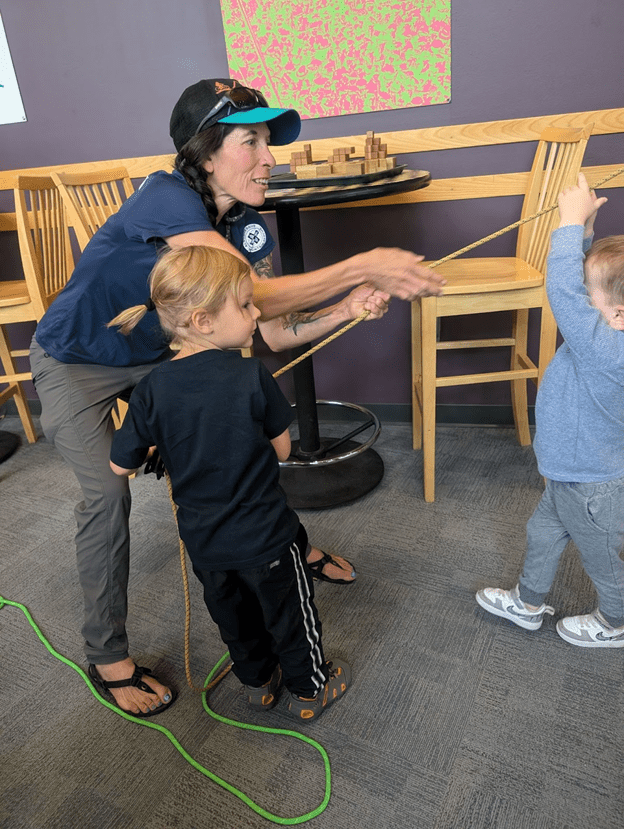
Therese Baca-Radler and my Vanessa Barela's son Guillermo demonstrating high angle ropes rescue at a public event. Photo credit: Vanessa Barela
With over 20 state agency partners, we came up with the following definition: Community and Place-Based Education engages New Mexico land and cultures as the starting point for learning within all academic subjects, ensuring that the curriculum is deeply connected to the local community and students’ identities, cultures, and experiences. This approach provides community-connected instruction that infuses high-level content, inquiry-based learning, and problem-solving with real-world learning opportunities, increasing academic achievement and engagement, improving individual and collective health, and building pride in oneself and in the State of New Mexico. This definition is the new root of what Outdoor Learning can be in New Mexico and what other state agencies, community partners, and outdoor education providers can use and lean on to help widen the view of the outdoors in NM.
Another task I undertook was to help align the reports and grant applications for schools from various state agencies. This would ease the burden of getting funds for schools and increase the number of youth engaged in these opportunities for learning. One example of where we achieved this goal was with the Youth Conservation Corps. Using my role as Outdoor Learning Specialist and YCC Commissioner we revised the application, grant review process, and reporting process to align with NMPED’s Outdoor Classroom Grant program making it easier for schools to get funding. Another example was working with State Parks to award two classes for naming an inland metal fish structure based on a book I wrote. State Parks and I built and taught a program for preschoolers for naming Garbanzo Stout the Cutthroat Trout and I paid for their bus for their field trip and a pizza party. Therese’s husband, Jason Radler spent hours building our metal fish with his brother, on behalf of his company, Local Concepts to be 8 feet big for a permanent art installation.

Summer 2024 Youth Conservation Corps members repairing a wildlife drinker with Friends of the Sandia Mountains. Photo credit: Vanessa Barela
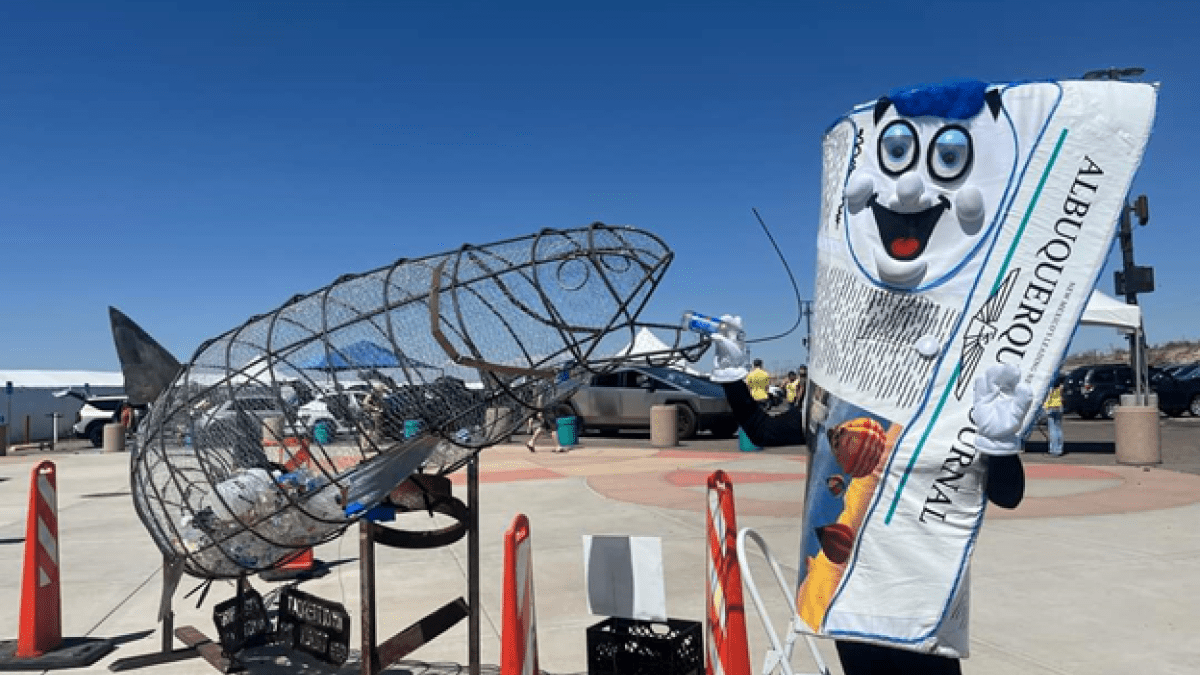
Garbanzo Snout and Albuquerque Newspaper Mascot. Photo credit: Vanessa Barela
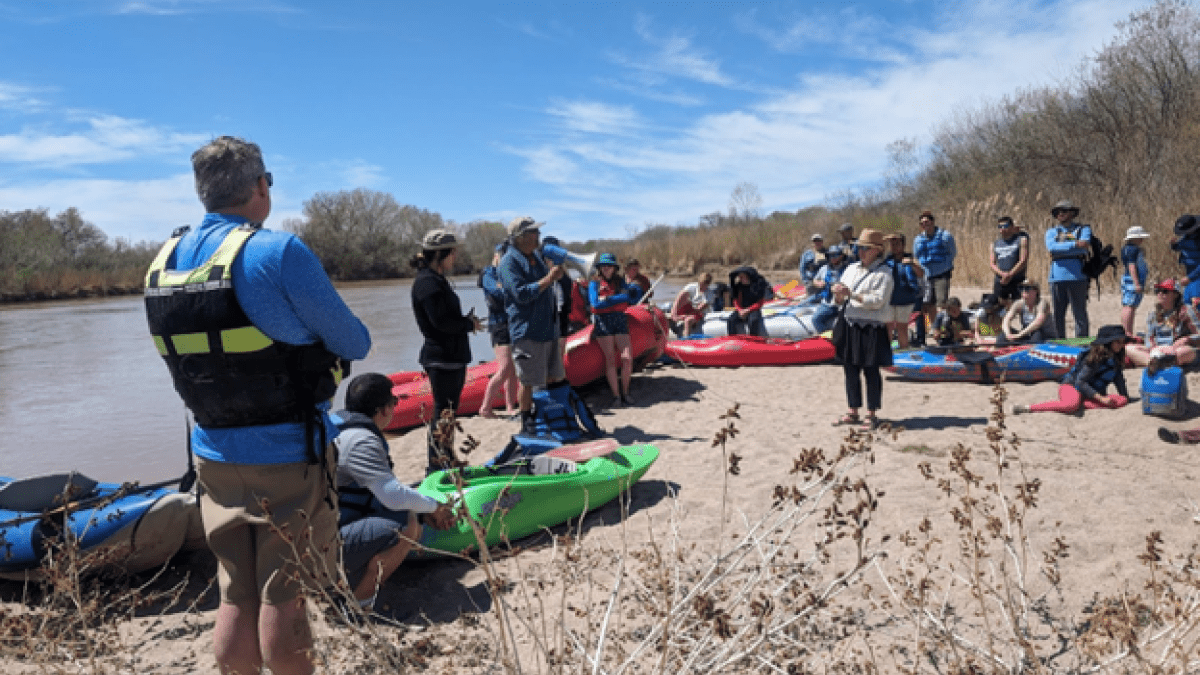
Rafting trip with Adobe Whitewater Club and Volunteers to get Youth Outside and teach them about water, water laws, and to be confident kayakers/rafters. Photo credit: Vanessa Barela
Embracing Change
With the success of the Outdoor Learning Program, there was often a lot of opposition. The biggest obstacle was continually being questioned about my expertise in outdoor or environmental learning, InterGovernmental Agreements, Memorandum of Understandings, and other government document alphabet soup. This pushback was a way of punishment for asking questions and challenging the status-quo. I questioned, challenged, and brought up new ways of learning, teaching, and tying teaching to learning standards, and I continued to express the validity of learning outdoors. By not being subject-specific, Community and Place-Based Education is an invaluable way to empower educators to teach across curricula, build student leaders, and focus on social-emotional well-being and even gross-motor skills of students. This encourages teachers and programs throughout New Mexico to take students outdoors, engage them in a variety of opportunities including recreation, and connect to their culture or community priorities.
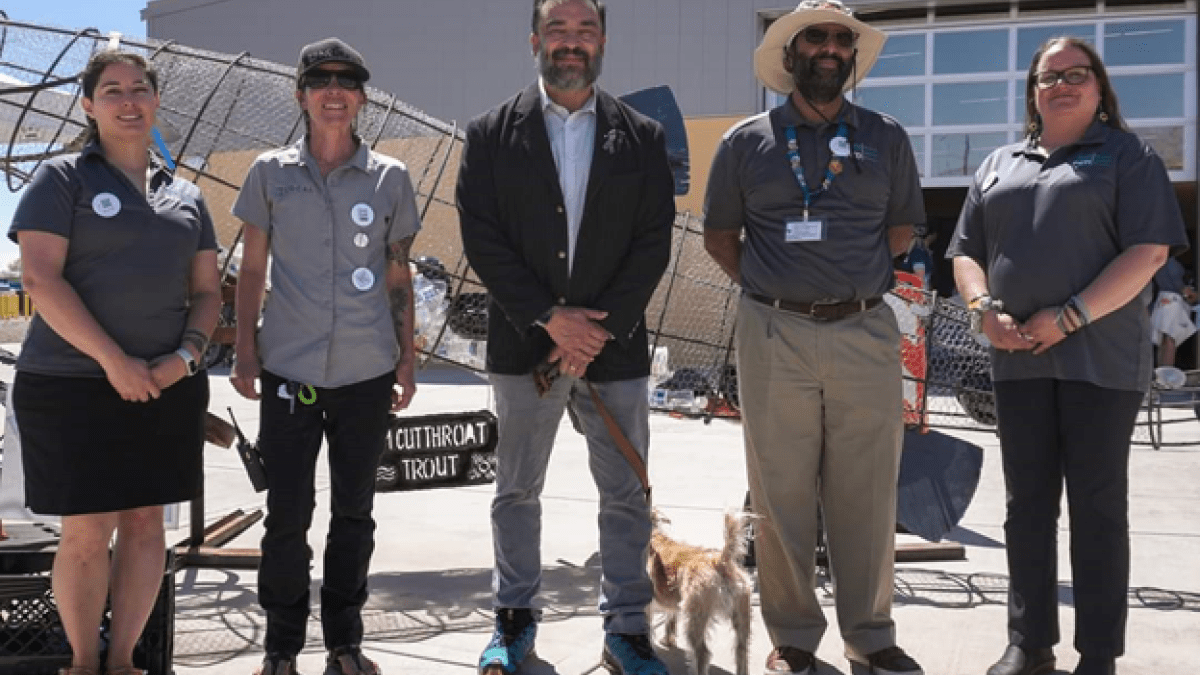
Left to Right, Vanessa Barela, Therese Baca-Radler, Dr. Arsenio Romero (NMPED Secretary of Education), Shafiq Chaudhary, and Patricia Gharrity at Earth Day Festival Therese and Vanessa Organized with Garbanzo Snout the Cutthroat Trout Sculpture. Photo credit: Greg Smith
In the end, I ended up leaving the NMPED realizing that more harm to my own mental, physical, and emotional health was happening by trying to demonstrate the importance of outdoor and environmental education to those who have never taught outside, who are not from New Mexico, and who uphold beliefs that continue to cause the systemic oppression of youth.
As I reflect on the past year, there was a flowering into accepting my role as a troublemaker to becoming an agent of change for youth. At the root of everything was my goal of empowering youth voices, getting youth outside, on the water, farming in their communities, and getting paid internships. Today, I sit as Co-Executive Director of Talking Talons Youth Leadership and we are building this vision across grade levels through our Climate Leadership Program. We are working to host interns, pilot a Junior Youth Conservation Corps, and build out leadership by including youth on the board of directors. I learn that systems change is tough, full of tears, fighting, and resilience. While my CAP did not proceed as I had originally envisioned, I am proud of the results. I continue to elevate youth voices, choices, and equity in opportunities involving climate, sustainability, and outdoor leadership.
I am also proud of walking away from the NMPED after fighting for 1.5 years for equity in educational opportunities in the outdoors. I realized that I was doing harm to myself by staying there and violating my deep-held beliefs on equity. I left to become a better version of myself, mother, and leader for women of color.



